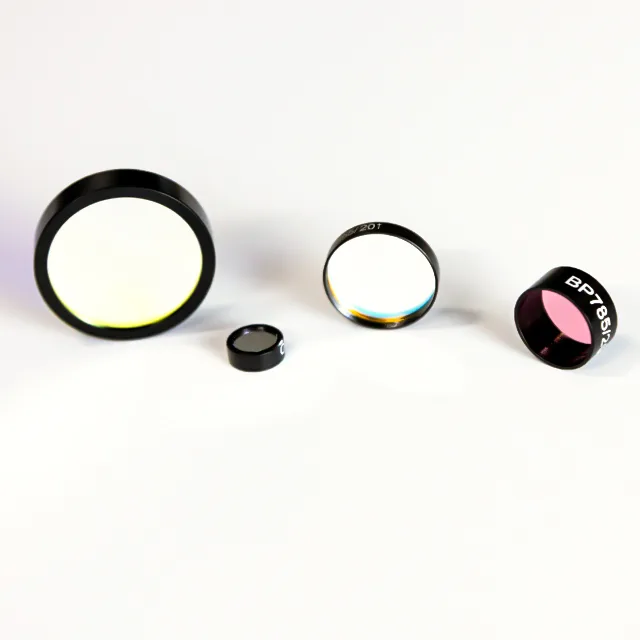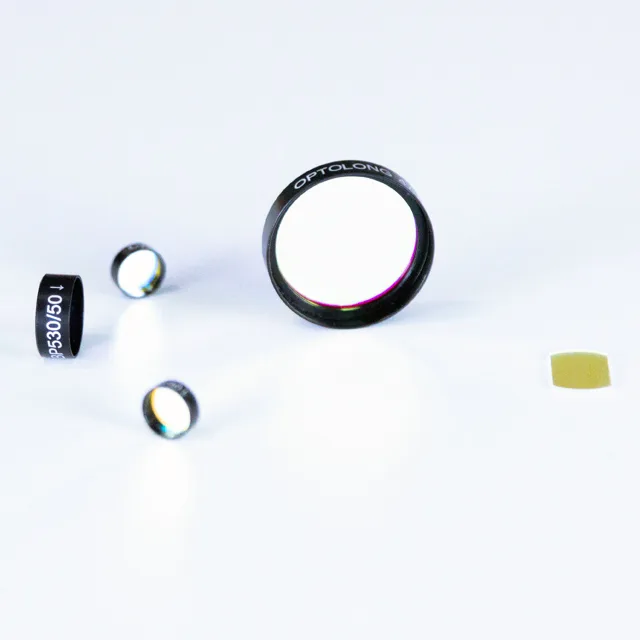Dichroic mirrors are unique in the field of optics in their ability to selectively reflect or transmit light according to its wavelength, thereby splitting it into different components.
In this blog post, we will delve into the fascinating aspects of dichroic mirrors and explore how they can effectively split light to facilitate various optical processes.
We will discuss the principles behind dichroic mirrors, their applications in areas such as laser microscopy and fluorescence imaging, and their advantages in manipulating light for specific purposes.
We will unravel the science behind how dichroic mirrors split light, giving you a deeper understanding of the important role dichroic mirrors play in optical technology.
What is a Dichroic Mirrors

Dichroic mirrors are essential components in optical systems that exhibit unique behavior in splitting and manipulating light based on its wavelength.
By understanding the benefits, principles and applications of dichroic mirrors, one can gain insight into their importance in various fields of science. For a specific definition of dichroic mirrors, check out this article what is dichroic mirror?
1. Principle of Dichroic Mirrors
Dichroic mirrors operate on the principle of selective light reflection or transmission, depending on the wavelength of the incident light. These mirrors leverage interference and thin film technology to achieve this property.
When light strikes a dichroic mirror, it interacts with the multiple layers of thin films with varying optical properties. Different wavelengths of light undergo constructive or destructive interference, resulting in specific wavelengths being either reflected or transmitted.
The ability of dichroic mirrors to reflect certain wavelengths while allowing others to pass through makes them valuable in optical systems where precise manipulation of light is required.
By controlling the thickness and composition of the thin films, dichroic mirrors can be tailored to reflect or transmit light within specific wavelength ranges, enabling researchers to separate and analyze different components of light effectively.
2. Applications of Dichroic Mirrors
The unique properties of dichroic mirrors find diverse applications across various scientific fields. In fluorescence microscopy, dichroic mirrors play a crucial role in separating excitation light from emitted fluorescence, allowing researchers to visualize specific structures within biological samples with high sensitivity and specificity.
By selectively reflecting or transmitting light at different wavelengths, dichroic mirrors contribute to the accuracy and resolution of imaging systems.
In spectroscopy, dichroic mirrors are utilized to split light into different spectral components, enabling precise analysis of materials based on their light absorption and emission characteristics.
By directing specific wavelengths of light toward detectors or filters, dichroic mirrors help researchers obtain detailed spectral information for a wide range of samples.
Moreover, in laser systems, dichroic mirrors serve as beam combiners or splitters, allowing multiple laser beams of different wavelengths to be combined or separated efficiently.
This capability is crucial in laser applications where combining or separating laser beams is necessary for achieving specific experimental or operational objectives.
Overall, the applications of dichroic mirrors in optics encompass a wide range of uses, from enhancing the sensitivity of imaging techniques to enabling advanced spectral analysis and laser manipulation.
The versatility and precision offered by dichroic mirrors make them indispensable components in modern optical instrumentation and experimental setups.
Mechanism Behind Dichroic Mirror Functionality
Diving into the intricate workings of dichroic mirrors unveils the fascinating optical behavior they exhibit.
These specialized mirrors operate on the principle of selective reflection and transmission, manipulating light based on specific wavelengths. Let’s delve into the mechanisms that make dichroic mirrors function with precision.
Reflection and Transmission Properties
The magic of dichroic mirrors lies in their ability to reflect certain wavelengths of light while allowing others to pass through. This unique property is achieved through the mirror’s design and strategic coating.
As light strikes the surface of a dichroic mirror, the wavelengths that align with the mirror’s coating are reflected, while those that don’t match the coating pass through.
This selective reflection and transmission make dichroic mirrors ideal for various optical applications, such as in lasers and microscopy.
Role of Thin Films in Dichroic Mirrors
Thin films play a crucial role in the creation and functionality of dichroic mirrors. These films are strategically deposited onto the mirror’s surface to achieve specific optical properties.
By precisely controlling the thickness and composition of these thin film coatings, manufacturers can tailor the mirror’s reflection and transmission characteristics to suit particular wavelengths of light.
This precise engineering allows dichroic mirrors to separate and manipulate light effectively, making them indispensable tools in modern optics and photonics applications.
In essence, dichroic mirrors harness the power of thin films to control the behavior of light, reflecting and transmitting specific wavelengths with remarkable accuracy. By leveraging the unique properties of these specialized mirrors, researchers and engineers can explore new frontiers in optical technologies and scientific discoveries.
Benefits and Limitations of Dichroic Mirrors
Dichroic mirrors offer various advantages in optical instrumentation, making them valuable components in optical systems.
These mirrors enhance optical performance by efficiently splitting and reflecting light based on wavelength. Here’s a closer look at the benefits and limitations of dichroic mirrors:
Advantages in Optical Instrumentation
- Enhancing Optical Performance: Dichroic mirrors are known for their ability to separate light into different wavelengths, allowing for precise control over the spectral components of light. This feature is particularly useful in applications where filtering specific wavelengths is crucial for accurate imaging and analysis.
- Multi-Wavelength Imaging: By selectively reflecting or transmitting different wavelengths of light, dichroic mirrors enable the simultaneous capture of images at various wavelengths. This capability is essential in fields such as microscopy and fluorescence imaging, where multiple wavelengths need to be captured simultaneously.
- Minimizing Spectral Crosstalk: Dichroic mirrors help reduce spectral crosstalk by effectively separating overlapping spectral bands.
- This minimizes interference between different wavelength channels, leading to cleaner and more accurate imaging results.
Challenges and Considerations
- Spectral Leakage: One limitation of dichroic mirrors is spectral leakage, where a small amount of light leaks into undesired wavelength bands. This can affect the purity of the separated wavelengths, leading to potential distortions in imaging and analysis.
- Angle Sensitivity: Dichroic mirrors are sensitive to the angle of incident light, which can result in variations in performance based on the angle of the incoming light. Proper alignment is crucial to ensure optimal functionality and minimize angle-related issues.
- Importance of Proper Alignment: Achieving precise alignment of dichroic mirrors is essential to maintain their efficiency in splitting light based on wavelength. Misalignment can lead to reduced performance, such as decreased spectral separation and imaging quality.
In conclusion, while dichroic mirrors offer significant advantages in optical systems by enhancing spectral control and enabling multi-wavelength imaging, they also come with challenges like spectral leakage and alignment sensitivity. Understanding these benefits and limitations is key to effectively utilizing dichroic mirrors in optical instrumentation for optimal performance.
Future Trends and Innovations in Dichroic Mirror Technology

In the realm of dichroic mirror technology, ongoing advancements and future trends are set to revolutionize various industries. Let’s explore the cutting-edge developments that are shaping the future of dichroic mirrors.
Emerging Technologies Utilizing Dichroic Mirrors
The integration of dichroic mirrors in emerging technologies has opened doors to innovative applications across diverse fields such as biophotonics, telecommunications, and quantum optics.
In biophotonics, dichroic mirrors play a crucial role in fluorescence microscopy, enabling researchers to visualize cellular structures with exceptional clarity.
Telecommunications benefit from dichroic mirrors for wavelength division multiplexing, facilitating efficient data transmission over optical networks.
Moreover, quantum optics relies on dichroic mirrors for manipulating quantum states and facilitating quantum information processing, paving the way for advancements in quantum computing.
Research and Development in Dichroic Mirror Design
Research and development efforts are focused on enhancing dichroic mirror performance, durability, and spectral range to broaden their utility.
Scientists and engineers are exploring novel materials and coatings to improve the reflectivity and transmissivity of dichroic mirrors, thereby optimizing their efficiency in various applications.
Durability enhancements aim to increase the longevity of dichroic mirrors under harsh environmental conditions, ensuring long-term functionality.
Furthermore, expanding the spectral range of dichroic mirrors enables them to accommodate a wider range of wavelengths, enhancing their versatility in scientific and industrial settings.
As the landscape of dichroic mirror technology evolves, research initiatives and technological innovations continue to drive the field forward, unlocking new possibilities for future applications across multiple industries.
Conclusion
In short, dichroic mirrors enable precise control of different spectral components. Dichroic mirrors have the unique ability to selectively reflect or transmit light at specific wavelengths, making them indispensable in a variety of optical applications.
From improving the performance of lasers to facilitating advanced imaging techniques, dichroic mirrors have proven to be instrumental in driving innovation in optics.
The application of dichroic mirrors extends to fields such as microscopy, spectroscopy and telecommunications. By utilizing interference principles and thin film coatings, dichroic mirrors can provide unparalleled control over light propagation, so the Optolong website supports customized optical solutions, if any Please contact us if required.
